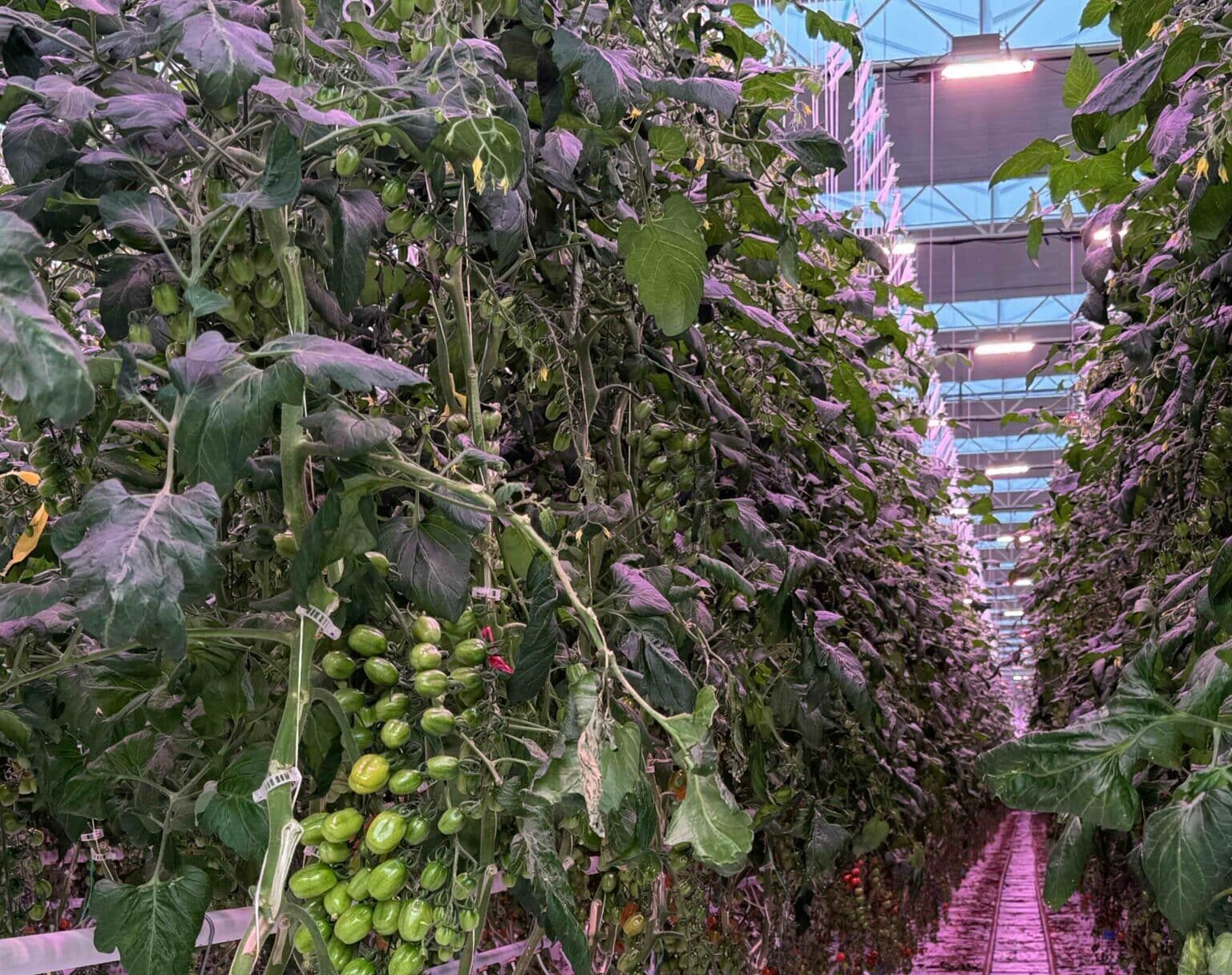Key Takeaways
- Sollum Technologies conducted a 22-week trial comparing dynamic LED lighting with static systems
- Dynamic lighting strategies led to up to 19.5% higher yield in grape tomatoes
- Trial took place in a commercial greenhouse in Ontario, with no changes to other infrastructure
- Results suggest improved crop uniformity, vigor, and earlier harvest timing
- The study highlights the potential role of real-time light spectrum control in specialty crop production
Sollum Technologies Evaluates Dynamic Lighting in Commercial Greenhouse
Sollum Technologies (Profile) has released results from a commercial greenhouse trial conducted in Ontario, Canada, focused on the use of dynamic LED lighting in grape tomato production. Over a 22-week period, two adaptive lighting strategies developed by Sollum were compared to a static broad-spectrum LED system, with yield outcomes and crop response evaluated across identical growing conditions.
According to the company, the trial showed that lighting tailored to crop physiology and environmental variation contributed to higher yields without requiring any other operational changes.
Trial Design and Objectives
Lighting Strategies Assessed
The trial tested three lighting approaches:
- Sollum 1: Broad and far-red spectrum with a midday red-light shift
- Sollum 2: Morning blue supplemental lighting followed by broad and far-red spectrum
- Control: Static LED lighting with fixed spectrum throughout the day
All treatments were applied between October and March, a period typically marked by lower natural light availability. The dynamic strategies were managed through Sollum’s SUNaaS® platform, which enables automated, real-time spectrum adjustments.
Reported Outcomes
Yield and Plant Response
- Yield: Both Sollum lighting strategies outperformed the control, with up to a 19.5% increase in yield
- Crop Quality: The trial also observed improved crop uniformity and vigor, along with an earlier harvest
- System Compatibility: No changes were made to HVAC, fertigation, or other infrastructure, indicating integration potential with existing greenhouse systems
The results suggest that dynamic light spectrum management, particularly the use of red light during midday and blue light at dawn, may enhance photosynthetic efficiency and plant performance.
Implications for Specialty Crop Production
The Ontario trial supports Sollum Technologies’ broader aim of offering dynamic lighting as a tool for greenhouse operators seeking to optimize output in varying climatic conditions. By adapting light delivery in real time, Sollum’s technology allows growers to respond to crop needs throughout the day, potentially improving yield per watt and reducing resource inputs.
According to Sollum, this approach offers flexibility to align light conditions with plant physiology, which may be especially beneficial during low-light seasons or in high-value crops like tomatoes.
Next Steps For Sollum Technologies
Sollum Technologies is expected to continue field evaluations in other crops and regions, building on findings from this and other commercial deployments. The Ontario trial contributes to ongoing discussions around how adaptive lighting systems can support greenhouse productivity without requiring large-scale operational changes.
Read the entire case study here.



5 Comments